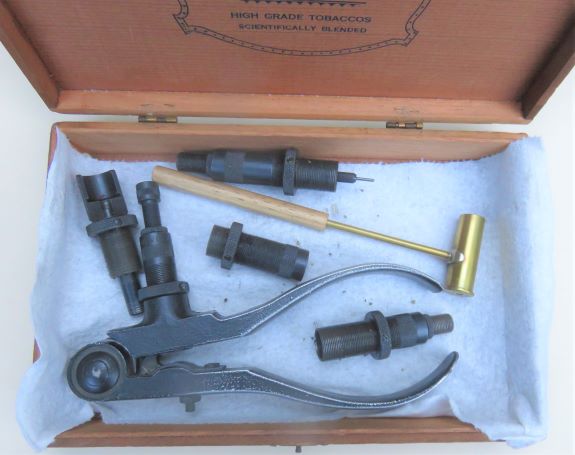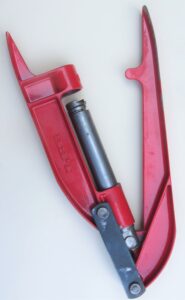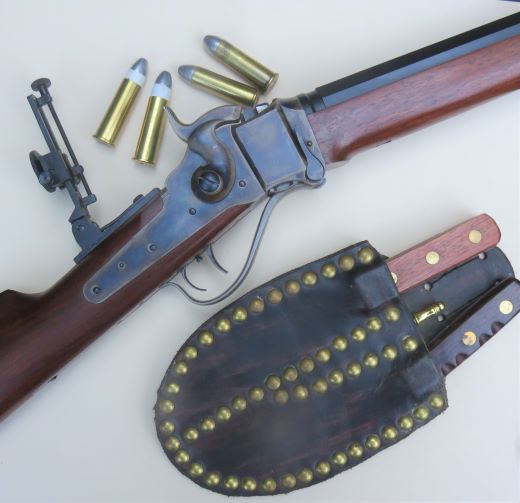
By Mike Nesbitt | Contributing Editor
One of the things that is often considered among black powder cartridge shooters is reloading ammunition while in camp.
Actually, this is easily done and several shooters who compete at the Matthew Quigley Buffalo Rifle Match near Forsyth, Montana regularly reload their empties during the practice days which precede their shooting for score. Some of them have portable benches set up so, for them, reloading in camp is just like it is done in the shop. Others enjoy using hand tools for some quick reloading in camp and that’s what we’ll try to focus on here.
For the buffalo rifles, reloading in camp is just another part of the territory because all of the professional buffalo hunters (that I’ve ever heard of) reloaded their ammo, right in camp. We might easily say that the vast majority of the bison harvested during the great hunts were collected with reloaded ammunition. In the old lists left by the traders, empty brass and primers were sold in surprising quantities, as well as gunpowder and lead, in addition to needed reloading tools and bullet molds. For the buffalo hunters, reloading was just part of the job.
We, however, have one great advantage that the hunters of the 1870s could not enjoy. That is the background of over 100 years of cartridge reloading with the highly shared experiences of several shooting writers. This simply means that if we have any questions about reloading tools or procedures, we can usually find the answers. And, because we’ve already covered the techniques of reloading black powder ammunition in earlier installments, this conversation will primarily be a review of portable reloading tools, although some comments about using those tools will certainly make their appearance.
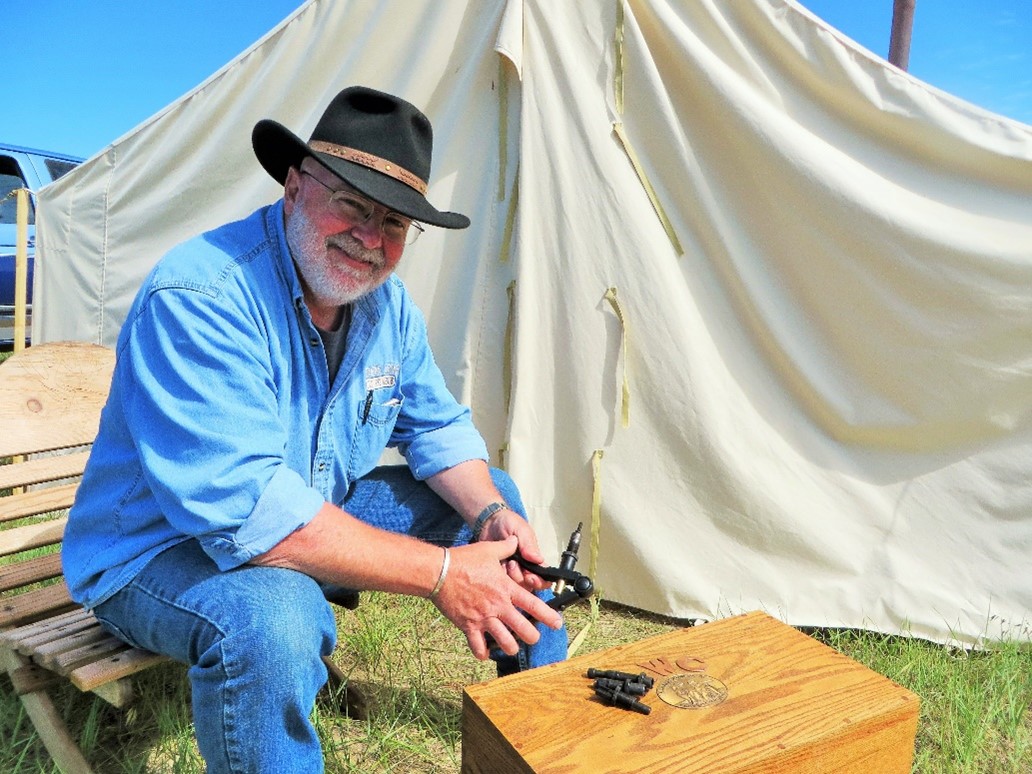
A proper place to start might be with making the bullets. I’ve cast a whole lot of bullets in camp, often right at the campfire, but most of those have been round balls for muzzleloaders. Casting for cartridge rifle bullets can be a bit different, at least in the amount of lead to be melted at one time. And we can’t forget that we’re in a more modern era so maybe we can melt the pot of lead over a Coleman stove rather than at the campfire. That would give us more temperature control and it might even melt the lead faster. Yes, some of our modern campers will suggest using an electric pot, powered by their camp generator. Fine, I have no problem with that even if it wouldn’t be my choice. Let’s agree that getting the bullets made is the important thing. (We might be camped at Quigley and there you can see just about everything.)
If we make bullets in camp, we’ll also need some lube and a way of adding lube to the bullets. For grease groove bullets the easiest way is to pan lube them, then use a cutter to remove the lubricated bullets from the “cake” in the pan. Those cutters can be bought or they are fairly easy to make. What’s more important is to have a mold that drops the bullets at the diameter you need for your particular gun. Certain mold makers, such as Accurate Molds, will make the mold fairly precisely for the diameter you order.
Similar things can be said about paper patched bullets, which a whole lot of black powder cartridge shooters use (see my last installment). Those bullets can be cast in camp just as easily as anywhere else, then wrap them with the paper patch, either dry or wet, and load them as you need them. If we’re following tradition, it was the paper patched bullets used by most of the buffalo hunters and some detail has been written about their casting. The main point mentioned was that the buffalo hunters were fussy; any bullet that wasn’t perfect got thrown back into the pot. After all, a bad bullet might result in a missed shot and that was lead as well as powder that was wasted.
We might visit bullet casting again when we have something more specific to say. But let’s move ahead to the care and reloading of the fired cases.
As with our general scheme of things in black powder reloading, our first step will be de-capping the brass. This can be done with almost any set of reloading dies but most of us prefer to use a de-capper rather than get our dies dirty with black power fouling. An easy way to do the de-capping is with a simple de-capping rod and a hammer, with the empty case sitting in a shell holder while resting on something firm. But it is more productive to use a de-capping tool and I’ll mention two of those that I use.
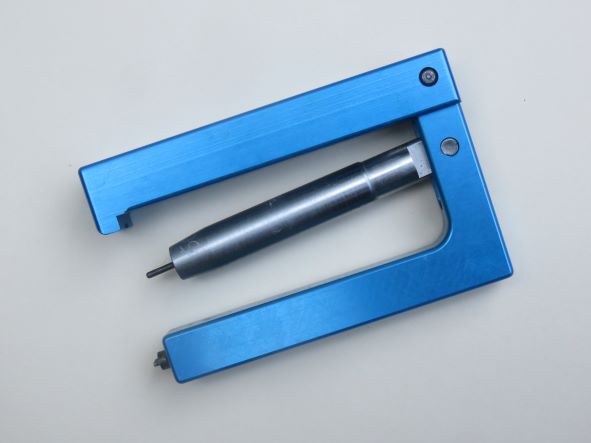
First is the SLM De-Capping Tool sold by Buffalo Arms Company. This handy tool is caliber specific and extra or replacement de-capping rods are available for various calibers. This tool also has a primer pocket cleaning scraper on the end of one of the handles. It’s built to last a lifetime and it uses RCBS de-capping pins, should one be broken. This tool is priced at about $90 and for more information check their web site at www.buffaloarms.com. My own SLM tool is for the .50 caliber Sharps and I use it every time I have .50/70 or .50/90 empties to de-cap, whether I’m in camp or not.
Another de-capping tool I favor is the Pope style but these are not currently available. Mine is set up for use with .44/77 cases although the shell holder can be changed. An advantage with this tool is that it also re-caps the brass very handily and it, like the SLM tool, has a primer pocket scraper on the end of one of the handles. This is a very good tool and we’re waiting for one of the shops to bring it back again. Mine came from C. Sharps Arms and it’s my hope that they will run another batch of them. If that happens, I’ll let you know.
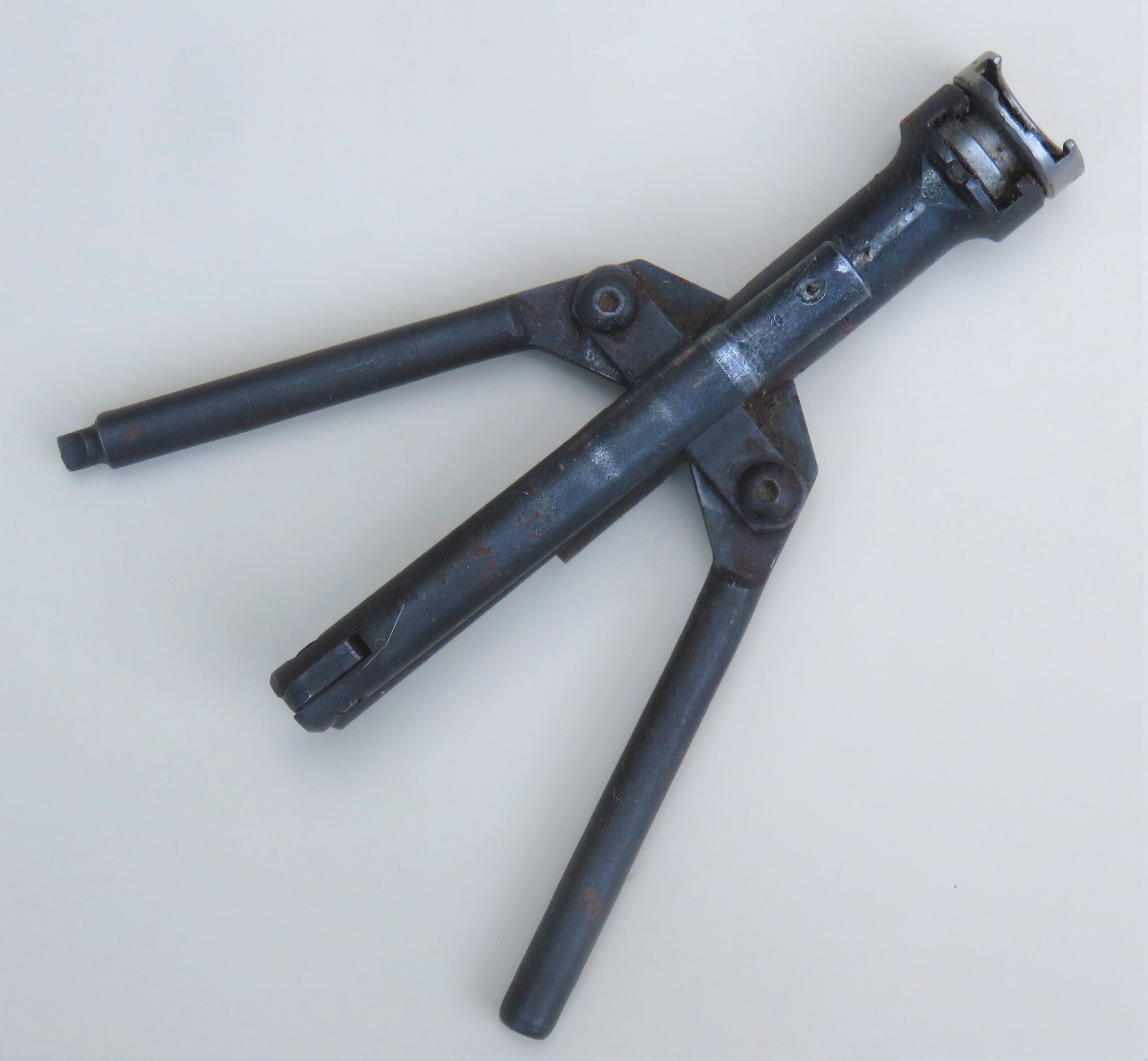
After the cases are de-capped, they need to be cleaned. Using water, with or without soap in an appropriately sized bucket, can or jar, let the dirty cases soak a bit and maybe shake them around. Then I use a case brush and scrub out each case before setting it out to dry. Several shooters have either made or bought case drying racks, where the empty wet cases are rested on upright dowel pegs so the moisture can run out of the case mouth. Set your loaded case drying rack in the sun and the breeze will dry the cases rather quickly. Of course, if it is raining, set the case drying rack inside the tent or camper. Once the cases are dry, loading can really begin.
Now for the cartridge reloading. One of the handiest “presses” to come along in a long time is the Breech Lock Hand Press by Lee Precision. This hand press uses standard reloading dies and it simply is a loading press that is held with the hands. I see several of these at shoots and in camp, sometimes used right behind the firing line.
If you have an interest in getting one of the Lee hand presses, I urge you to look on their web site at leeprecision.com/breech-lock-hand-press because they offer it in several packages. The hand press can be purchased by itself or as a set, complete with dies and possibly with other accessories. By itself, the hand press is listed at $73.00. And it is currently available.
The hand press in the photo is mine, fitted with an RCBS shell holder for the Sharps .50s, but I must admit that I’ve used it very little. And using it is just like using a bench mounted press except that you hold it in your hands. Loading technique and operation is just like using the bench mounted press. The advantage to the hand press, of course, is that you can throw it in with the camping gear and take it with you.
This leads me to the Lyman 310 tool and I’m actually disappointed that Lyman does not show this tool in stock or even mentioned presently. But I like the 310 Tool and I’m lucky enough to have handles and dies for several calibers, including .44/40 and the big .50/70 which requires a special set of handles. For taking to camp, I keep my 310 tool for the .50/70 in an old cigar box (which used to hold old cigars). Sometimes that is traded for the .44/40 set up, depending on what rifle I’m using.
The 310 tool dies include an expander die and that can be used to push down an over-powder wad to compress the charge of black powder, just like the regular dies used in a press. The same amount of powder compression might not be possible, unless you’ve got a grip like Superman, but a reduction in the amount of powder will generally cure that and still give you good shooting ammunition. To mention the .44/40 dies just a bit, I’ve found that seating the bullets and compressing the powder for this caliber to not be any problem.
Mainly, with a 310 tool, the only extra item needed is a powder measure. To go with my .50/70 dies, I had my friend Allen Cunniff shorten a .50/70 case to make a 65-grain powder scoop for me. It works very well.
Another powder measure I’ve used a lot is simply one of the adjustable powder measures made for muzzleloaders where you set the charge needed on the sliding scale. For carrying powder, I most often simply use a powder horn, again taken from my muzzleloading gear, and pour the powder from the horn into the measure just as if I was loading a muzzleloader instead of reloading cartridges.
While I’ve mentioned only a couple of calibers specifically, my intention was to show or explain how reloading black powder cartridges in camp is not particularly difficult. In fact, it is no more difficult than reloading at the bench and sometimes in camp it is a lot more convenient.

